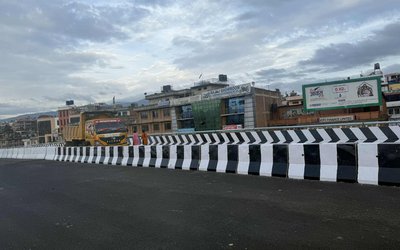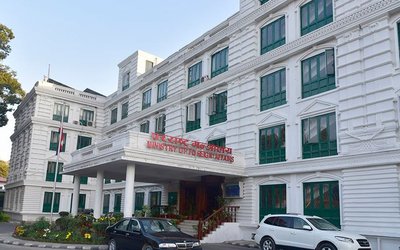More on News





When exam results are announced, some candidates who did not fare well try to poison themselves. In most major hospitals in Nepal, at any given time there are about half a dozen patients admitted with organophosphate poisoning. Indeed this is the most common poisoning in Nepal and much of South Asia, especially Sri Lanka. As the doctor takes the history and examines the patient with this affliction, a truly preventable human tragedy unfolds.Many patients are also young women who have tried to inflict self harm because they had a quarrel with their husband or could not get along with their in laws.
The local names of these organophosphate compounds are nuvan, metacid, dalf, and suchlor. These are pesticides which are all too readily available from shops in Nepal. These pesticide compounds which are absolutely very useful for the farmer can be deadly when ingested by a human being. Medical students use a pneumonic, “SLUDGE” ( salivation, lacrimation, urine incontinence, diarrhea, gastrointestinal cramps and emesis or vomiting)to help them remember the varied effects of this pesticide in a patient.
These symptoms can potentially be fatal depending on the amount ingested and just how promptly the treatment was started. The most essential drug used to treat organophosphate poisoning is derived from plants (datura, deadly nightshade, mandrake, among others) from the Solanaceae family and is called atropine. Ironically, the word atropine comes from Atropos, one of the three Fates in Greek mythology, who decides how someone should die. In the case of organophosphate poisoning, atropine is clearly a life saving antidote.
These pesticides inhibit the natural destruction of an enzyme called acetylcholine in the human body which then sets off a cascade of secretions summarized by the above pneumonic.
Orgagnophosphates are thought to be the “classic” nerve agents and several different compounds act in this manner including sarin, tabun, soman, and cyclosarin. Except for agent VX all the organophophates are liquid at standard room temperature and highly volatile with symptoms showing up within minutes to hours after exposure. VX is an oily liquid with a low vapour pressure, therefore it does not acutely cause symptoms. However it is an environmental hazard because it can persist in the environment for longer periods.
In the Western world too organophosphate is now classified as a major chemical bioterrorism agent especially after the sarin (organophosphate) gas attacks in the Tokyo suburbs in 1994 and 1995 when the victims complained that “their world went black”followed by all the symptoms of “SLUDGE” mentioned above.Sarin isa vapour form of organophosphate that first causes injury to the eyes leading to pupillary narrowing and partial blindness after exposure.In the lungs organophosphate cause excessive secretions and spasms of the muscles in the lungs. From the alveoli ( the smallest grape- like portions of the lungs), the organophosphate compounds gain their greatest entry into the blood stream. As they circulate in the blood stream then nausea, vomiting, diarrhea and muscle twitchings take place and death ensues after these compounds enter the nervous system, causing seizures and stoppage of breathing.
In South Asia the organophosphate poisoning tragedy can be prevented in large measure if there is political will. So long as a teenager that has fared badly in her SLC exams can go to a general store and easily buy organophosphate pesticides, we will continue to witness these preventable tragedies unfold time after time.







